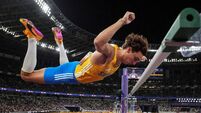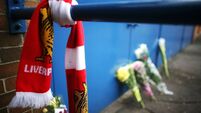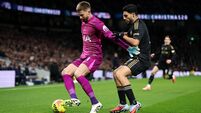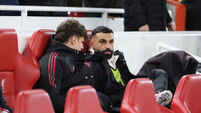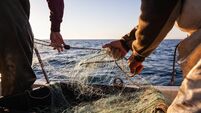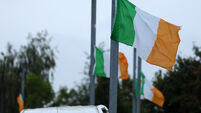Understanding and adapting: the true reason for Kerry win
This time last year, Kerry folk were lamenting the end of a three in a row dream at the hands of Tyrone. It was a detested, indigestible and sickening defeat that stuck in the craw as much as any before but when the smoke cleared there was a realisation that it provided a huge opportunity for rehabilitation and re-growth. The end of the 2008 season was studied like never before in an attempt at understanding the defeat and when some sort of appreciation of the Tyrone template was arrived upon, there was a sense that the team had too much in them to throw away the momentum built up over the previous five years.
Speaking of last year’s final defeat on these pages last Tuesday, Jack O Connor said “despite what people say about our rows or whatever I had with that team, I have a good bond with that team going back over a few years. I felt I could offer something. I felt there was more in them. There was definitely another All-Ireland in that team.”
Pat O’Shea departed, Jack O’Connor had his second coming and so began the process of rebuilding, re-imagining and re-learning the art of winning games. Almost as if their thought process was vivified by failure, the Kerry players, O’Connor and his backroom team picked up where O’Shea and his crew had left off and set about finding the pieces of the jigsaw that we saw fitting so well together again last Sunday.
For a brief period immediately after last Sunday’s final, I bumped into Pat O’Shea and we shot the breeze. As we nudged our way along through the throng on Jones’s Road shortly after five o clock and as I listened to this most humble and gracious and proud Kerry man, I got a sense of why Kerry had returned to the top table in such a short space of time. We spoke of individual contests that had gone Kerry’s way, of how the defence was as resolute as any Kerry unit ever was in a final; how Seamus Scanlon played his designated role to a tee and how Paul Galvin rolled all his rage up into a ball and whirled around relentlessly with tackle after tackle until Cork could take no more.
If Pat O’Shea was thinking privately how he could have done with Galvin’s aggression in their confrontation with Tyrone last year, he certainly wasn’t saying so but by the time we parted company at the junction on North Circular Road, the notion of lessons learnt had underscored our conversation.
Wasn’t it ever thus – The Roman Empire was built on lessons learnt from defeat at the hands of enemies. Prior to the first Punic War, the Romans had very limited experience in naval warfare but they managed to defeat Carthage using a combination of reverse engineering, captured Carthaginian ships, recruitment of experienced Greek sailors from cities already conquered, other tactical innovations and lessons absorbed from their enemies. Despite not having a strong maritime tradition, the Romans taught themselves to become sailors and moved on. Likewise in football, Kerry have taken the more useful elements of their opposition’s game plan to strengthen their own hand while retaining their core philosophy on how the game should be played.
When Down threatened their preeminence in the 60s, Kerry stuck steadfastly to catch and kick principles and moved on without ever actually avenging those defeats. In the 70s, Mick O’Dwyer recognised the need to match the athleticism of Kevin Heffernan’s Dublin and when his team adopted the running game mixed in with a share of catch and kick they were accused of playing football that was “cúl le cine” or contrary to bloodlines. Eight All-Ireland titles in 12 years managed to stifle the naysayers. When one of that gilded generation, Pat Spillane decried the arrival of Tyrone six years ago, he could hardly have envisaged his native county taking the finer defensive elements of what he termed “puke football” to their bosom – but that is what Kerry have done, with a subtle twist.
The performances of Marc O Sé, Tommy Griffin and Tom O’Sullivan in the full-back line last Sunday will be the abiding memory for many Kerry people just as the litany of second-half wides will be for many Cork followers. Many of those wides were as a direct result of pressure applied out the field or of forwards kicking from positions that they’d rather not have.
Much was made of Kerry’s retreat into defence for long periods of the second half but the Kingdom, like their arch-rivals Tyrone, have learnt to engage the opposition and fight the battle on their own terms.
There have been countless retellings of the stories of 2009 throughout the week in pubs and places from Glenbeigh to Listowel. Winter evenings from here to Christmas will be dominated by stories of Paul Galvin’s rehabilitation, of Darragh O Sé’s compelling swansong, of Mike McCarthy’s comeback and of Tadhg Kennelly’s destiny being fulfilled. But for the players and management, to have the wisdom and the humility to change and take on board the painful lessons of defeat is, in my view, the real story of Kerry’s championship in 2009.

